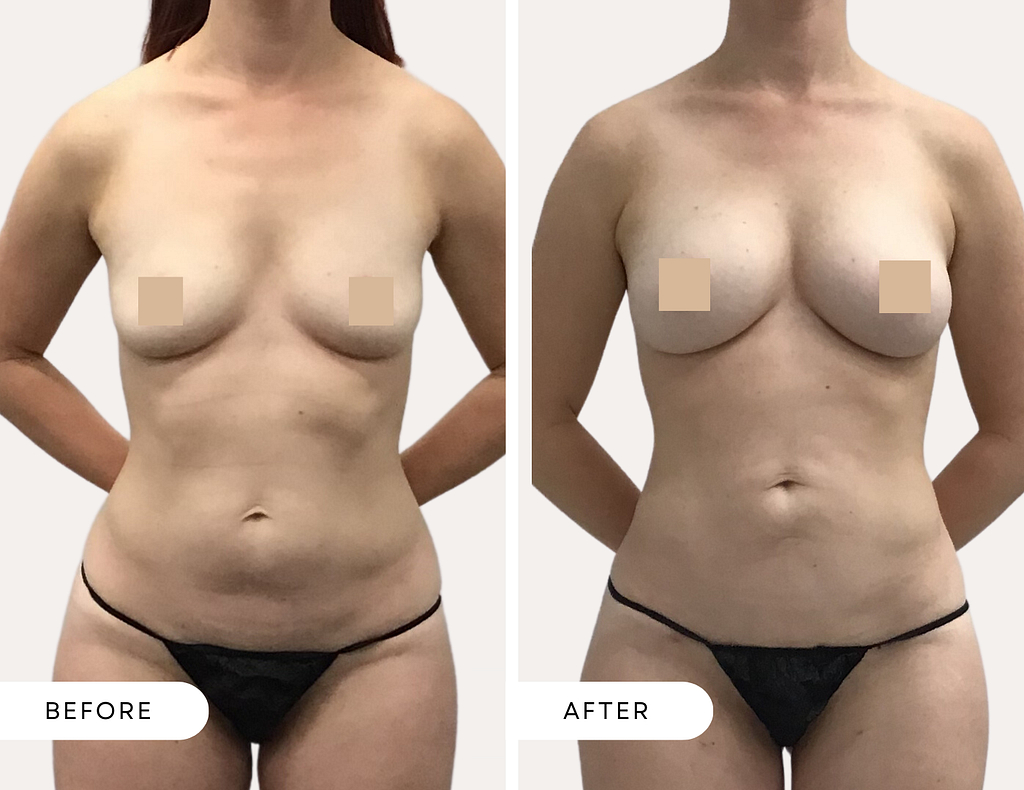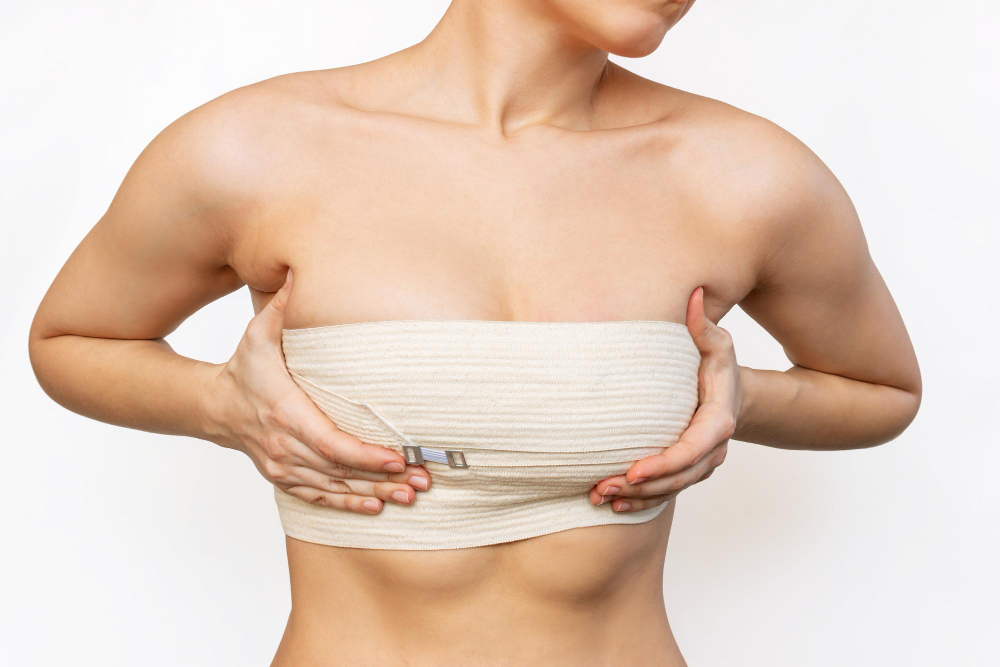Breast fat transfer, also known as autologous breast augmentation, is a procedure that enhances the size and shape of breasts by injecting fat from other parts of the body, such as the abdomen or thighs, into the breast.
This method serves as an alternative to traditional breast implants, offering a more natural look and feel while minimizing certain risks associated with synthetic implants. Fat transfer breast augmentation’s cost is among the factors individuals considering the procedure need to understand, as it can vary depending on the surgeon, location, and other factors.

The average cost of a breast fat transfer procedure is approximately $9,959. This cost generally includes fees for the surgeon, anesthesia, and the facility, as well as any necessary pre-operative and post-operative appointments. While some patients may consider the cost of fat transfer breast augmentation to be high, it’s essential to weigh the benefits of the procedure, such as the long-lasting, natural results and reduced risk of complications typically associated with implants.
Key Takeaways
- Breast fat transfer is an alternative to traditional breast augmentation using implants
- The average cost of the procedure is around $9,959, including various fees and appointments
- Benefits of fat transfer breast augmentation include natural results and reduced risks of certain complications

Understanding Breast Fat Transfer
The Procedure
Breast fat transfer, also known as fat grafting or fat injections, is a cosmetic surgery procedure that involves the use of a patient’s own fat to increase breast size. It offers a natural-looking alternative to traditional breast implants. In this technique, fat is removed from other areas of the body through liposuction, processed, and then injected into the breasts to achieve the desired size increase.
The fat transfer breast augmentation procedure is performed under general anesthesia and typically takes 2-3 hours to complete. It is important to consult with a board-certified plastic surgeon to discuss your goals and expectations, as well as to determine if you are a good candidate for this procedure.
Natural Appearance Benefit
One of the main benefits of fat transfer breast augmentation is the natural appearance it offers, as the procedure uses your own fat rather than synthetic implants. This can result in a more natural feel, as well as a more natural-looking breast shape and contour.
As the fat is harvested and injected strategically, the plastic surgeon can sculpt the breasts to achieve a desirable and proportional look. Furthermore, since there are no implants involved, the risks associated with implant-related complications such as rupture or displacement are significantly reduced.
However, it is essential to recognize that fat transfer breast augmentation may not provide the same degree of size increase as traditional implants. The overall outcome may vary depending on factors like the amount of available fat, individual anatomy, and desired breast size. Moreover, some of the injected fat may be reabsorbed by the body over time, potentially necessitating additional procedures to maintain the desired results.
In conclusion, fat transfer breast augmentation is a viable alternative for those seeking a natural-looking, less invasive option to enhance their breast size. By carefully considering the procedure, risks, and potential outcomes, patients can make a well-informed decision about whether this approach aligns with their goals and preferences.

Preparing for the Surgery
Qualifications for Candidates
When considering breast fat transfer surgery, it’s crucial to determine if you are a good candidate for the procedure. Autologous fat transfer uses body fat from a donor site, typically the abdomen or thighs, to increase breast size or reconstruct the breast following a mastectomy. Ideal candidates for this surgery are in good health, have stable weight fluctuations, and do not smoke. It is important to disclose your complete medical history to your surgeon to assess your suitability for the procedure.
Consultation Process
The consultation process plays a key role in preparing for breast fat transfer surgery. During this phase, you will meet with a board-certified plastic surgeon to discuss your goals and expectations. Your surgeon will evaluate your donor site and gather information about your medical history to determine if the surgery is a viable option for you. They will also discuss potential risks and explain the surgical process in detail.
After the initial evaluation, your plastic surgeon will create a personalized treatment plan tailored to your specific needs. This plan will outline the process, including the donor site selection and the expected recovery time. It is essential to openly communicate your expectations and concerns with your surgeon to achieve the best possible outcome.
In summary, preparing for breast fat transfer surgery involves ensuring you are a suitable candidate and engaging in a thorough consultation process with a board-certified plastic surgeon. By following these steps, you can confidently and effectively prepare for your surgery while maintaining a clear, neutral tone.

Associated Costs
Cost Breakdown
Fat transfer breast augmentation is a cosmetic surgery procedure that involves liposuction and transferring the removed fat into the breasts to achieve natural-looking volume. The cost of this procedure can vary based on several factors, including the surgeon’s fees, anesthesia fees, facility fees, and the extent of the surgery.
On average, fat transfer breast augmentation costs around $10,130, with some procedures costing as low as $4,378 or as high as $17,500. This cost estimate includes the following components:
- Surgeon’s fees: The fees charged by the surgeon for the procedure, typically based on their expertise and experience.
- Anesthesia fees: The cost of anesthesia, which is usually administered by an anesthesiologist or nurse anesthetist.
- Facility fees: Fees associated with the surgical facility where the procedure is performed. This covers the use of the operating room, equipment, and staff.
- Medical tests: Some preoperative tests may be required, such as blood tests, to ensure the patient’s safety during the procedure.
- Liposuction costs: The cost of liposuction, which is performed to remove fat from other areas of the body prior to transferring it to the breasts.
It is essential for patients to discuss the cost breakdown with their specific surgeon, as each procedure may vary based on individual needs and goals.
Payment and Financing
Many patients may not be able to pay the entire cost of a breast augmentation procedure upfront. To assist with the financial burden, most cosmetic surgeons offer patient financing plans. These plans allow patients to pay for their procedure over time through monthly installments. Some financing options may also include no-interest plans if the balance is paid off within a specified period.
There are also third-party financing companies, such as RealSelf, that offer medical loans specifically for cosmetic procedures. These loans typically have competitive interest rates and flexible payment terms, ensuring that a broader range of patients can access and afford the breast augmentation they desire.
It is crucial for patients to explore and compare different payment and financing options to find a plan that suits their individual financial situation and needs.

Post Surgery and Recovery
Recovery Process
After a breast fat transfer, patients will need to wear compression garments to help reduce bruising and swelling around the grafted areas. The recovery period usually lasts for a few weeks, during which time patients should follow their surgeon’s post-operative care instructions. This may include taking prescribed pain medications, keeping the treated areas clean, and avoiding excessive physical activities.
As fat cells are transferred during the procedure, it’s essential to maintain a stable weight throughout the recovery process. Significant weight loss or gain may alter the overall results of the surgery. Moreover, patients should be aware that the aging process may lead to sagging or changes in the breast shape over time.

Potential Complications
While breast fat transfer is considered a safe plastic surgery option, some risks and complications may arise. These include scarring, cysts, fat necrosis, infection, lumps, rippling, asymmetry, and allergic reactions to anesthesia or medications used during surgery. In rare cases, further surgery may be needed to address these issues.
Breast fat transfer doesn’t typically involve breast implants or silicone implants; however, if used in combination with a breast lift or augmentation, the additional risks associated with implants should be considered.
Expectations and Adjustments
The results of a breast fat transfer generally take a few months to become fully apparent, as the transferred fat cells need time to stabilize and integrate into the surrounding tissues. Some patients may experience an increase in cleavage and cup size, while others may only notice minor improvements in breast fullness or shape.
It’s important for patients to have realistic expectations and understand that the final outcome may vary based on factors such as the amount of fat available for transfer, individual healing responses, and the technique used by the surgeon. Additionally, future weight loss, aging, and hormonal changes can impact the long-term results of the procedure.
In conclusion, breast fat transfer provides an alternative to traditional breast augmentation, offering a more natural look and feel. It’s essential for patients to be well-informed and understand the recovery process, potential complications, and necessary adjustments to manage their expectations and achieve the best possible result.

Frequently Asked Questions
How much does fat transfer breast augmentation typically cost?
Fat transfer breast augmentation can cost around $10,130 on average, though prices can range from $4,378 up to $17,500 depending on the extent of the procedure and other factors source.
Is the cost of fat transfer breast augmentation different by location?
Yes, the cost of fat transfer breast augmentation can vary by location. Prices can be influenced by factors such as regional demand, the experience of the surgeon, and the cost of living in the area. It is important to research and compare costs in different locations to find the best value for your procedure.
How does the cost of fat transfer breast augmentation compare to traditional implants?
Generally, the cost of fat transfer breast augmentation is higher than traditional implants. Traditional breast implant surgeries are typically within the range of $6,000 to $10,000 source. Fat transfer procedures can be more expensive due to the inclusion of liposuction, as well as the extra time and expertise required to perform the fat transfer.
What is the price range for liposuction and fat transfer procedures?
The price range for liposuction and fat transfer procedures will depend on various factors such as the location of the procedure, the surgeon’s experience, and the areas being treated. An accurate cost estimate will be provided upon consultation with a qualified surgeon.
How long can one expect the results of a fat transfer to breast to last?
The results of a fat transfer to breast can last several years, but may not be permanent. The duration of the results can be influenced by factors such as the patient’s lifestyle, aging, and weight fluctuations. Some patients may require additional fat transfer procedures to maintain optimal results.
Is fat transfer effective for lifting saggy breasts?
While fat transfer can be effective in adding volume and improving the shape of the breasts, it may not be the most suitable solution for lifting saggy breasts. A breast lift, or mastopexy, is a more appropriate procedure to address sagging or drooping breasts. This procedure tightens the surrounding tissue and removes any excess skin, resulting in a more lifted and youthful appearance. A fat transfer can enhance the results of a breast lift by providing additional volume.
- Why is My Poop Black: Uncovering the Causes and Solutions - December 21, 2023
- Clear Protein Drinks: Optimal Hydration and Muscle Support for Athletes and Fitness Enthusiasts - December 21, 2023
- Does Apple Juice Make You Poop: Uncovering the Digestive Effects - November 29, 2023








